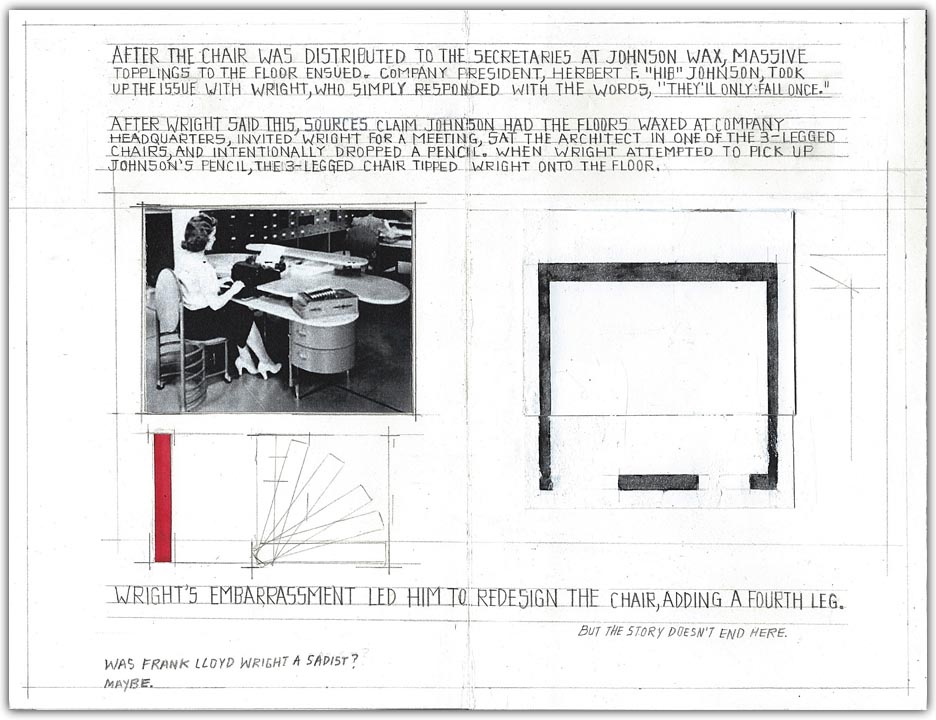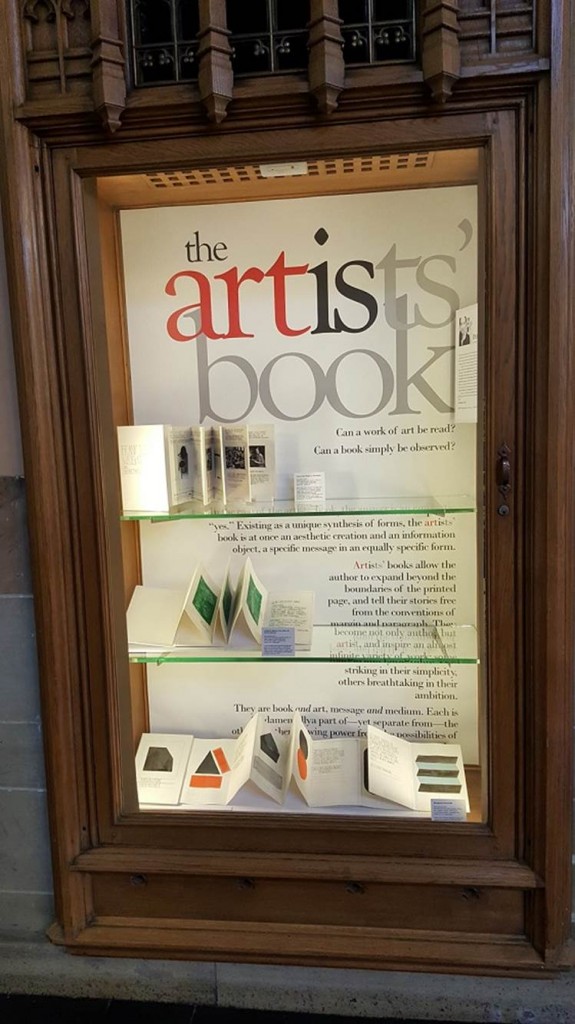
Frank Lloyd Wright vs. Secretaries, 2014; This image used with the permission of the artist. ©Deb Sokolow
The Art Library has been spotlighting the research material produced by faculty in the Departments of Art History and Art Theory and Practice. Every other month we put together a short biography of a creator and display books and other library materials by or about them. This month the Art Library turned their attention to Lecturer in Art Theory and Practice, Deb Sokolow, and discovered her remarkable artists’ books.
 Three of Sokolov’s artists’ books are on display in the Art Library case on the south side of Deering Library’s third floor lobby. Please stop by to see these artworks!
Three of Sokolov’s artists’ books are on display in the Art Library case on the south side of Deering Library’s third floor lobby. Please stop by to see these artworks!
Artists’ books are not like other art library resources—books about art. Instead, artists’ books are themselves works of art. Artists’ books may be mass produced, unique objects or small editions, but they are always driven by the artist/author’s idea that can be best expressed through the form of a book. These are books that aren’t accidentally beautiful, “like a work of art.” They are deliberate, asking the question, is art always observed, and are books always read? Perhaps both art and books deserve more expansive definitions.
Sokolw, who teaches ART125, Introduction to Drawing in fall, winter and spring terms (yes, those are the students you’ll see spread around Deering Library with their drawing boards in their laps) puts drawing at the center of her practice. Her quirky, text-driven drawings explore the charged, unclear and awkward moments in history, and ask the viewer to consider alternate possibilities to those they’ve always blindly accepted. In the three works presented, Sokolow considers a mundane office chair, former bosses, and management structures, and reinterprets them with dry, observational commentary. We are tempted to see it as humor, but there is just the right amount of truth to the text; exactly enough to make us uncomfortable with such a casual dismissal. Together with illustrations that sometimes reinforce the text, but just as often make us ask why, we search for the connection we think we should see, but which may not be apparent.
It is the curiously satisfying sense of imbalance we feel in trying to prioritize image and text and the object as a whole. We are accustomed to books that tell or teach us something. These artists’ books use the combination of text and image to cast doubts on the objext’s symbolism as a source for authority.
— By Cara List
Art Library curator
